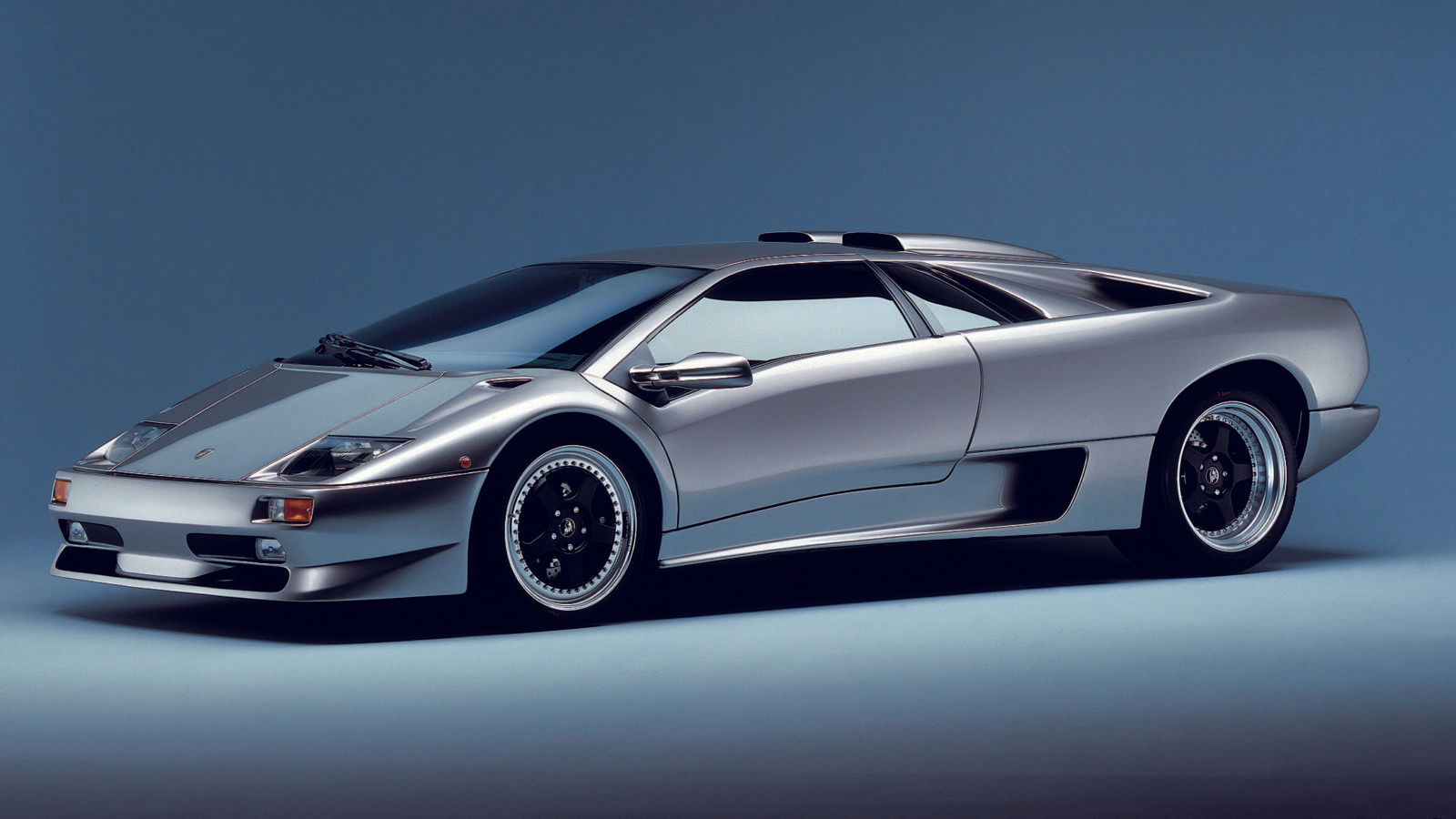1990 To 2000 Trucks For Sale: Your Comprehensive Guide to the Analog Era’s Workhorses pickup.truckstrend.com
In the automotive world, certain decades stand out for their unique blend of design, engineering, and reliability. The 1990s, stretching into the early 2000s, represent a golden age for pickup trucks. These vehicles, often referred to as the "analog era" trucks, offer a compelling proposition for buyers today: a balance of classic, rugged utility, simpler mechanics, and an affordability that modern trucks can rarely match. Whether you’re a DIY enthusiast needing a reliable hauler, a small business owner on a budget, an off-road adventurer seeking a customizable platform, or simply someone who appreciates the no-nonsense charm of a bygone era, the market for 1990 to 2000 trucks is ripe with opportunities. This guide will delve into everything you need to know about finding, evaluating, and owning one of these iconic vehicles.
Why Choose a 1990-2000 Truck? The Allure of the Analog Era
1990 To 2000 Trucks For Sale: Your Comprehensive Guide to the Analog Era’s Workhorses
The appeal of trucks from this decade goes far beyond mere nostalgia. They represent a sweet spot in automotive history, offering significant advantages over both older classics and newer, more complex models:
- Simplicity and Ease of Maintenance: Unlike contemporary trucks laden with intricate electronics, complex emission systems, and integrated computer networks, 90s trucks are generally more straightforward. This means fewer sensors to fail, easier diagnosis for common issues, and often, more accessible components for DIY repairs. Many basic maintenance tasks can be performed by an owner with a modest set of tools and a repair manual.
- Durability and Longevity: Built before the widespread adoption of lightweight materials, many trucks from this period feature robust, over-engineered components. Frames are typically thick steel, and powertrains (especially the legendary diesel engines) were designed for heavy-duty, long-term use. It’s not uncommon to find these trucks with 200,000, 300,000, or even 400,000+ miles on them, still running strong.
- Affordability: The primary draw for many is the price. A well-maintained 1990-2000 truck can be acquired for a fraction of the cost of a new or even late-model used truck, making them excellent value for money. This lower entry cost also leaves more budget for necessary repairs, upgrades, or personalization.
- Classic Styling and Character: While subjective, many enthusiasts prefer the clean lines, boxy profiles, and distinct road presence of 90s trucks over the more aerodynamic, often bulbous designs of modern vehicles. They exude a utilitarian charm that’s hard to replicate.
- Less Depreciation: Unlike new vehicles that shed thousands of dollars in value the moment they leave the lot, 90s trucks have largely bottomed out in depreciation. Well-maintained examples, particularly those with desirable configurations (e.g., diesel engines, 4×4, specific trim levels), can even appreciate in value.
- Utility and Capability: These trucks were built to work. Whether you need to tow a boat, haul lumber, or navigate rough terrain, they offer genuine capability without excessive frills.

However, it’s also important to acknowledge potential challenges:
- Safety Features: Compared to modern trucks, 90s models lack advanced safety features like multiple airbags, stability control, blind-spot monitoring, and anti-lock brakes (ABS was often optional or less sophisticated).
- Fuel Economy: Generally, these trucks are less fuel-efficient than their modern counterparts due to heavier construction and less advanced engine technologies.
- Emissions Compliance: Depending on your state or local regulations, older trucks may face stricter emissions testing or restrictions in certain areas.
- Wear and Tear: Age means wear. Components like suspension bushings, seals, and electrical wiring will likely show signs of age and may require attention. Rust is a significant concern, especially in regions that use road salt.

Key Models and Manufacturers of the Era
The 1990s saw significant competition and innovation in the truck market, leading to several iconic and highly sought-after models.

- Chevrolet/GMC (C/K Series, Silverado/Sierra, S-10/Sonoma):
- Full-Size (C/K 1500/2500/3500, later Silverado/Sierra): The GMT400 platform (1988-1998) is legendary for its durability and square-body styling. Popular engine options included the robust 5.7L (350 cu in) Vortec V8 and the 7.4L (454 cu in) big block. The GMT800 platform (1999 onwards) brought a more refined ride and updated powertrains like the 4.8L, 5.3L, and 6.0L Vortec V8s, along with the first Duramax diesel in 2001 (just outside our window, but relevant for 2000 models that often share components).
- Mid-Size (S-10/Sonoma): Smaller and more fuel-efficient, these were popular for lighter duties, offering 4-cylinder and V6 engine options (like the 4.3L Vortec V6).
- Ford (F-Series, Ranger):
- Full-Size (F-150/250/350): The 9th (1992-1996) and 10th (1997-2003) generation F-Series trucks dominated sales. The 9th gen retained a classic look, offering 4.9L I6, 5.0L, and 5.8L V8 gasoline engines, plus the highly coveted 7.3L Power Stroke turbo-diesel. The 10th gen brought a more aerodynamic design, with Triton V8 engines (4.6L, 5.4L) and the Super Duty line separating from the F-150, still offering the 7.3L Power Stroke as a diesel option.
- Compact (Ranger): A perennial favorite, the Ranger offered reliable 4-cylinder and V6 engines (2.3L, 3.0L, 4.0L) in a compact, maneuverable package.
- Dodge (Ram, Dakota):
- Full-Size (Ram 1500/2500/3500): The "big rig" styling introduced in 1994 revolutionized truck design. These trucks were known for their powerful V8 Magnum gasoline engines (5.2L, 5.9L) and, most famously, the legendary 5.9L Cummins turbo-diesel, which offers immense torque and durability.
- Mid-Size (Dakota): Larger than compacts but smaller than full-size, the Dakota offered V6 and V8 engine options, including the 5.2L and 5.9L Magnum V8s, making it a capable mid-sizer.
- Toyota (Tacoma, Tundra, Pickup):
- Compact/Mid-Size (Pickup, then Tacoma): Toyota’s reputation for reliability shines here. The "Pickup" (Hilux in other markets) was a tough, no-nonsense truck. It was replaced by the Tacoma in 1995, which quickly gained a following for its bulletproof reliability, strong resale value, and off-road prowess. Engines included 2.4L and 2.7L 4-cylinders, and a 3.4L V6.
- Full-Size (Tundra): Introduced in 1999 as Toyota’s first full-size contender, the Tundra quickly earned praise for its quality and strong V8 engine options (4.7L).
- Nissan (Frontier, Hardbody):
- Compact/Mid-Size (Hardbody, then Frontier): The "Hardbody" pickup was known for its ruggedness. It was replaced by the Frontier in 1997, offering a more modern design and capable V6 engines.
What to Look For When Buying
Purchasing a 20-30 year old truck requires a keen eye and a methodical approach. A thorough inspection is paramount.
- Rust: This is the biggest enemy of older trucks. Inspect the frame (especially near suspension mounts and body mounts), cab corners, rocker panels, wheel wells, bed supports, and underneath the bed liner. Surface rust is manageable, but extensive frame rust or perforation is a deal-breaker.
- Engine:
- Cold Start: Listen for excessive smoke (blue = oil, white = coolant, black = fuel/rich mixture), knocking, or ticking.
- Fluid Leaks: Check under the truck for oil, coolant, or transmission fluid leaks.
- Maintenance: Ask for maintenance records. Look for signs of regular oil changes.
- Diesel Specifics: For Cummins/Power Stroke, check for blow-by (remove oil cap while running, look for excessive smoke/pressure), fuel leaks, and proper turbo spooling.
- Transmission:
- Test Drive: Ensure smooth shifts in all gears, both up and down. No slipping, harsh jerks, or delayed engagement.
- Fluid: Check the transmission fluid level and color (should be red, not brown or black, and not smell burnt).
- Manual Transmission: Check clutch engagement (no slipping), shifter feel, and listen for grinding.
- Drivetrain (4×4): Engage 4-wheel drive (both high and low range) on a loose surface (dirt/gravel, not pavement). Listen for unusual noises or binding. Check front axle shafts and differential for leaks.
- Suspension and Steering:
- Bounce Test: Push down on each corner; the truck should rebound once or twice, not bounce excessively.
- Play: Check for play in the steering wheel. Listen for clunking noises over bumps, indicating worn ball joints, tie rods, or bushings.
- Tires: Look for uneven wear, which can indicate alignment issues or worn suspension components.
- Brakes: Check pedal feel (should be firm, not spongy), listen for grinding or squealing. Inspect rotors and pads if possible.
- Electrical System: Test all lights (headlights, taillights, turn signals, brake lights), gauges, horn, wipers, radio, HVAC system (AC and heat), power windows, and locks.
- Interior: Assess the condition of seats, dashboard, and carpet. Look for water stains or mildew smells, which could indicate leaks.
- Mileage vs. Condition: High mileage isn’t always a deal-breaker if the truck has been well-maintained. Conversely, low mileage doesn’t guarantee a problem-free vehicle if it’s sat for long periods or wasn’t cared for.
- VIN Check: Run a VIN check (CarFax, AutoCheck) to look for accident history, salvage titles, flood damage, or odometer discrepancies.
- Pre-Purchase Inspection (PPI): This is the single most important step. Have a trusted, independent mechanic inspect the truck before you buy. They can identify issues you might miss and provide an estimate for necessary repairs.
The Buying Process: Tips for a Successful Purchase
- Set a Realistic Budget: Don’t just consider the purchase price. Factor in potential repairs, insurance, registration, and fuel costs.
- Research Thoroughly: Understand the common issues and strong points of the specific make and model you’re interested in. Online forums and owner groups are invaluable resources.
- Where to Look:
- Online Marketplaces: Facebook Marketplace, Craigslist, AutoTrader, eBay Motors, OfferUp. Be wary of scams.
- Local Dealerships: Often have higher prices but may offer some warranty or reconditioning.
- Private Sellers: Often the best deals, but "as-is" sales mean you bear all risk.
- Auctions: Can yield great finds but require expertise to avoid lemons.
- Communicate with the Seller: Ask detailed questions about the truck’s history, maintenance, and any known issues.
- Test Drive Extensively: Drive it on various roads – city, highway, rough roads if possible. Test all functions. Listen for noises, feel for vibrations. Pay attention to how the engine starts when cold and hot.
- Get a Pre-Purchase Inspection (PPI): Do not skip this step. It’s a small investment that can save you thousands.
- Negotiate: Don’t be afraid to negotiate the price, especially if the PPI reveals issues. Be prepared to walk away if the deal isn’t right.
- Paperwork: Ensure the title is clear and matches the VIN. Get a bill of sale that includes the sale price, date, VIN, and names/signatures of both buyer and seller. Understand your state’s registration requirements.
Maintenance and Ownership Considerations
Owning a 1990-2000 truck means embracing regular maintenance. These vehicles respond well to care and can provide many more years of service.
- Regular Fluid Changes: Engine oil, transmission fluid, differential fluid, coolant, brake fluid.
- Filter Replacements: Air filter, fuel filter, oil filter.
- Lubrication: Grease chassis components (ball joints, tie rods) if equipped with grease fittings.
- Tire Care: Rotate tires regularly, check pressure, and replace when tread is low.
- Rust Prevention: Wash the undercarriage regularly, especially if you live in a salted road region. Consider rustproofing treatments.
- Parts Availability: Generally excellent for popular models due to the sheer number produced and the simplicity of their designs. Aftermarket support is also robust.
- DIY Potential: Due to their simpler design, many common repairs like brake jobs, fluid changes, and even some engine work are accessible to the average DIYer.
- Modifications and Upgrades: These trucks are popular platforms for customization, from lift kits and larger tires to engine performance upgrades (especially diesels).
1990-2000 Truck Estimated Price Guide
Prices for 1990-2000 trucks vary wildly based on make, model, year, condition, mileage, engine type, drivetrain (2WD/4WD), and geographical location. This table provides a general range for popular models in various conditions. "Fair" condition implies functional but with cosmetic flaws and potentially minor mechanical issues. "Good" suggests a well-maintained, reliable driver. "Excellent/Collector" indicates very low mileage, pristine condition, or rare/desirable configurations.
| Make/Model | Typical Engine Options | Fair Condition Range | Good Condition Range | Excellent/Collector Range | Key Differentiating Factor(s) |
|---|---|---|---|---|---|
| Chevy C/K 1500/2500/3500 | 5.7L V8, 7.4L V8 | $3,000 – $7,000 | $7,000 – $15,000 | $15,000 – $30,000+ | GMT400 desirability, 4×4, crew cab, original paint |
| Chevy Silverado/Sierra | 4.8L, 5.3L, 6.0L V8 | $4,000 – $8,000 | $8,000 – $16,000 | $16,000 – $30,000+ | GMT800 refinement, 4×4, extended/crew cab, specific trims |
| Chevy S-10/GMC Sonoma | 2.2L I4, 4.3L V6 | $2,000 – $5,000 | $5,000 – $10,000 | $10,000 – $20,000+ | 4×4, ZR2 package, low mileage, manual transmission |
| Ford F-150 (9th Gen) | 4.9L I6, 5.0L V8, 5.8L V8 | $3,000 – $7,000 | $7,000 – $14,000 | $14,000 – $25,000+ | Regular cab short bed, XLT/Lariat trim, 4×4 |
| Ford F-150 (10th Gen) | 4.6L V8, 5.4L V8 | $3,500 – $7,500 | $7,500 – $15,000 | $15,000 – $28,000+ | SuperCab/SuperCrew, 4×4, Lariat, Lightning (much higher) |
| Ford F-250/350 (Super Duty) | 7.3L Power Stroke Diesel, 5.4L V8, 6.8L V10 | $6,000 – $12,000 | $12,000 – $25,000 | $25,000 – $45,000+ | 7.3L Power Stroke Diesel (highly sought after), 4×4, Crew Cab |
| Ford Ranger | 2.3L I4, 3.0L V6, 4.0L V6 | $2,000 – $5,000 | $5,000 – $10,000 | $10,000 – $20,000+ | 4×4, manual transmission, FX4/Edge packages |
| Dodge Ram 1500/2500/3500 | 5.2L V8, 5.9L V8, 5.9L Cummins | $4,000 – $9,000 | $9,000 – $20,000 | $20,000 – $40,000+ | 5.9L Cummins Diesel (highly sought after), 4×4, Quad Cab |
| Dodge Dakota | 2.5L I4, 3.9L V6, 5.2L V8, 5.9L V8 | $2,500 – $6,000 | $6,000 – $12,000 | $12,000 – $25,000+ | V8 engines, 4×4, R/T trim (higher) |
| Toyota Tacoma | 2.4L I4, 2.7L I4, 3.4L V6 | $5,000 – $10,000 | $10,000 – $20,000 | $20,000 – $35,000+ | Legendary reliability, 4×4, TRD Off-Road, manual trans |
| Toyota Tundra | 3.4L V6, 4.7L V8 | $6,000 – $12,000 | $12,000 – $25,000 | $25,000 – $40,000+ | Toyota reliability, 4.7L V8, Access Cab, 4×4 |
| Nissan Frontier | 2.4L I4, 3.3L V6 | $3,000 – $6,000 | $6,000 – $12,000 | $12,000 – $20,000+ | 4×4, King Cab, Super Charged (rare) |
Note: Prices are estimates and can fluctuate significantly based on local market conditions, specific features, and historical significance of certain models/trims.
Frequently Asked Questions (FAQ)
Q1: Are 1990-2000 trucks still reliable?
A1: Yes, many models from this era are exceptionally reliable, especially those from Toyota and the heavy-duty diesel variants from Ford and Dodge. Their simpler mechanicals often mean fewer complex issues. Reliability hinges heavily on prior maintenance and current condition. A pre-purchase inspection is crucial.
Q2: Which is the best engine from this era?
A2: For gasoline, the Chevrolet 5.7L Vortec V8, Ford 5.0L/5.8L V8s, and Toyota 3.4L V6 are highly regarded for their durability. For diesel, the Ford 7.3L Power Stroke and Dodge 5.9L Cummins are legendary for their longevity, power, and vast aftermarket support.
Q3: Are parts still available for these older trucks?
A3: Generally, yes. For popular models like the Ford F-Series, Chevy C/K and Silverado, and Dodge Ram, parts are readily available new, aftermarket, and used. Smaller volume models might require a bit more searching, but most common wear items are still produced.
Q4: What about fuel economy?
A4: Don’t expect modern fuel efficiency. Most V8 gasoline full-size trucks will average 10-15 MPG. Smaller trucks like the Ranger or S-10 might achieve 18-22 MPG. Diesel trucks often fare better, especially on the highway, potentially reaching 16-22 MPG depending on the load and gearing.
Q5: Are they safe compared to modern trucks?
A5: No. They lack many standard modern safety features like multiple airbags, advanced crumple zones, stability control, traction control, and driver-assist technologies. While sturdy, they offer less passive and active safety than current vehicles. Drive defensively.
Q6: How much should I expect to pay for a pre-purchase inspection (PPI)?
A6: A PPI typically costs between $100 and $250, depending on the mechanic and the depth of the inspection. It’s a small price to pay for peace of mind and can save you from costly hidden problems.
Q7: Can I get financing for a 1990-2000 truck?
A7: Traditional auto loans are often difficult to secure for vehicles over 10-15 years old. You may need a personal loan, a classic car loan (if the truck is in exceptional, collector-grade condition), or pay with cash.
Conclusion
The 1990 to 2000 truck market offers an enticing proposition for buyers seeking rugged utility, mechanical simplicity, and undeniable character without the hefty price tag of newer models. While they require careful inspection and an understanding of their age-related considerations, the right truck from this era can be a reliable, versatile, and rewarding investment. By following this comprehensive guide, conducting thorough research, and prioritizing a pre-purchase inspection, you can confidently navigate the market and find a workhorse that serves your needs for years to come. These trucks aren’t just vehicles; they’re a testament to an era of straightforward engineering, ready to tackle the demands of modern life with analog charm.
